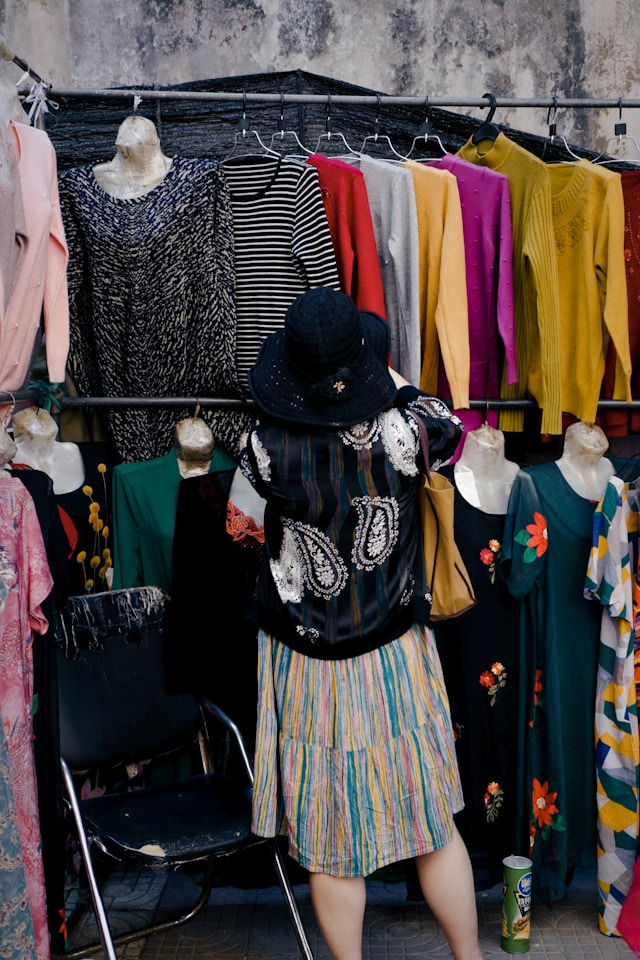What you wear influences how others see you. But did you know that colors, styles, and even small details in your clothing send messages, whether you mean to or not? Like it or not, your outfit speaks before you do.

The right outfit can help you appear confident and professional, but the wrong choice might create the opposite effect.
Clothing choices impact first impressions in social, professional, and cultural settings. Wearing something too bold may draw unwanted attention, while an overly casual outfit could make you seem unprepared. Even subtle details like logos, slogans, and color choices shape perceptions more than people realize.
So, what’s the solution? How can you make sure your clothing choices work in your favor? In this guide, we will break down common mistakes and show you how to dress with intention so you always leave the impression you want.
The Power of Color in Clothing
The colors you wear strongly shape first impressions. Different shades create different impressions, influencing mood, confidence, and how approachable you seem. Choosing the right colors helps set the tone for any occasion.
Black – Often linked to power, authority, and elegance. It’s a go-to choice for formal events, business settings, and serious occasions. Too much black can feel intimidating, so balancing it with softer tones can make it more approachable.
White – Represents purity, simplicity, and professionalism. It’s commonly worn in corporate settings and formal gatherings. However, if not styled well, it can be too plain or clinical.
Red – A bold, attention-grabbing color associated with passion and confidence. It can create a strong impression but may also come across as aggressive if overused.
Blue – Often seen as calming and trustworthy. For example, lighter shades appear friendly, while darker tones, like navy, give off a professional and authoritative vibe.
Gray – A neutral, balanced color that blends professionalism with subtlety. It works well in both business and casual settings.
Bright Colors – Yellow, orange, and neon shades can appear energetic and fun. However, in professional events, they may be seen as too casual or distracting.
The most important factor is your personal association with colors. So, choose shades that align with how you want to feel or be perceived, as the psychological effect comes from the qualities we associate with those colors.
Overdressing vs. Underdressing for the Occasion
Dressing appropriately for an event is about balance. But wearing something too formal or too casual can make you feel out of place and send the wrong message. Therefore, understanding the setting and expectations helps you make the right choice.
Overdressing can sometimes make others feel uncomfortable. A full suit at a casual gathering may come across as excessive. Likewise, wearing a gown to a semi-formal event might draw unnecessary attention. While it’s better to be slightly overdressed than underdressed, knowing when to dial it down ensures you don’t stand out for the wrong reasons.
Underdressing can make you seem unprepared or inattentive to the occasion. For example, showing up in jeans to a business event may suggest a lack of professionalism. Further, wearing casual clothes to a formal dinner could be seen as disrespectful. If you are unsure, dressing one level above casual is a safe approach.
To avoid uncertainty, checking invitations, asking the host, or researching the venue can provide useful clues about the dress code. And if you are in doubt, choose classic, well-fitted pieces that strike a balance. A blazer, dress shoes, or elegant accessories can make an outfit look more polished without feeling too formal. Dressing appropriately shows that you understand the occasion and respect the people around you. It also helps you feel confident and comfortable in any event.
Cultural Sensitivities in Clothing
Clothing carries different meanings across cultures. An outfit that seems normal in one place might be considered inappropriate elsewhere. For this reason, understanding cultural expectations helps you dress respectfully, especially when attending international events or visiting new places.
In many cultures, modesty is important. For example, in regions like the Middle East, South Asia, and some religious communities, covering shoulders, arms, and legs is expected. Wearing revealing clothing in these settings may come across as disrespectful. If you are traveling or attending an event with strict dress customs, wearing lightweight layers can help you stay comfortable while being mindful of traditions.
Colors also carry symbolic meanings. For example, white represents mourning in some Asian cultures, whereas red is often worn for celebrations. Meanwhile, bright colors may feel inappropriate at solemn events in cultures that prefer dark tones for mourning.
Being aware of these differences helps you avoid unintentional offense. When in doubt, choosing neutral, modest clothing is a safe and respectful option.
Logos, Slogans, and Statement Pieces
What you wear sends a message, and clothing with logos, slogans, or bold designs can make an even stronger impression. While some choices may spark conversation, others could lead to misunderstandings.
- Brand Logos – Designer logos can signal status or taste. But wearing too many at once may come across as excessive or showy. In professional events, subtle branding is often more appropriate.
- Slogans and Text – Words on clothing can be fun or expressive, but not all messages fit every occasion. For instance, political, religious, or controversial statements may offend others or lead to awkward conversations.
- Graphic Designs – Some symbols, images, or patterns carry cultural or historical significance. What seems stylish to one person might have an unintended meaning in another culture. Therefore, it’s important to consider the context before wearing certain designs.
- Personalized Pieces – Custom clothing, like jerseys or monogrammed items, can showcase individuality. However, wearing personalized outfits in formal settings may not always be appropriate. Instead, choosing classic and neutral pieces can help maintain a polished appearance.
Being mindful of what your clothing says helps you avoid sending the wrong message. If you are in doubt, neutral or minimal designs are a safe choice for most situations.
The Psychology of All-Black Attire
Black is one of the most powerful colors in fashion. It shows authority, confidence, and elegance. This is why many choose it for formal events, business events, and everyday wear, because it creates a polished and timeless look. Also, it holds a deeper psychological impact on how others see you.
While black is often seen as stylish, in many cultures, men and women wear black clothing specifically for mourning rituals at funerals. It symbolizes loss and remembrance, offering a visual expression of grief and respect for the loved one. Beyond its association with mourning, black also conveys strength and independence.
In professional spaces, black conveys leadership and strength. Meanwhile, in social gatherings, it can give off an elegant or edgy vibe. Some wear it to express themselves, while others like it because it looks slimming and goes with everything.
Beyond fashion, black is also linked to emotions. For example, it can symbolize mourning, which is why it is commonly worn at funerals. On the other hand, in creative industries, black represents modernity and minimalism. But the way people react to black depends on the event, the outfit, and the personal style of the wearer.
Gender Expectations and Clothing Perceptions
Clothing has long been linked to gender expectations. Society often places different standards on how men and women should dress. These expectations can shape first impressions and influence how people are treated in professional and social settings.
Men are often expected to wear structured clothing that shows authority. For example, suits, button-down shirts, and neutral colors are seen as professional and respectable. However, when men choose bright colors or softer fabrics, some may view them as less traditional.
Women, on the other hand, face pressure to balance professionalism with femininity. Wearing a fitted dress may be seen as polished. But the same outfit on another occasion could be judged as too bold.
Perceptions around gender and clothing are shifting. More people are embracing personal style without following outdated expectations. Dressing with confidence is key, no matter the norms that may exist.
Dressing for Authority vs. Approachability
Clothing influences how people respond to you. Some outfits make you look authoritative, while others feel more warm and approachable.. Striking the right balance depends on the setting and the message you want to send.
Dressing for authority means choosing structured clothing with clean lines and solid colors. For instance, dark suits, tailored blazers, and polished shoes give off a strong and professional look. Also, minimal accessories and neutral tones create a strong, confident look. This is why such a style is common in corporate settings where confidence and credibility matter.
On the other hand, dressing for approachability involves softer fabrics, relaxed fits, and lighter colors. For example, sweaters, business-casual outfits, and natural tones make you seem more open and inviting. Further, a simple, well-put-together look helps people feel comfortable around you.
The right choice depends on the situation. In leadership roles, a mix of both can help build trust while maintaining authority.
Final Words
What you wear says more than you think. The colors, styles, and details in your clothing send messages, whether intentional or not. Dressing appropriately helps you feel confident and makes the right impression.
Understanding dress codes, cultural sensitivities, and color psychology makes choosing an outfit easier. Wearing the right outfit for an occasion shows respect, while avoiding common mistakes keeps you from standing out for the wrong reasons. Besides, small details like logos, slogans, or fabric choices can also shape perceptions.
Your clothing should reflect who you are while fitting the setting. Whether you want to look professional, friendly, or stylish, dressing with purpose helps you feel good and present yourself in the best way. The key is to choose outfits that match the occasion and represent you in the best way possible.
















Add Your Comment